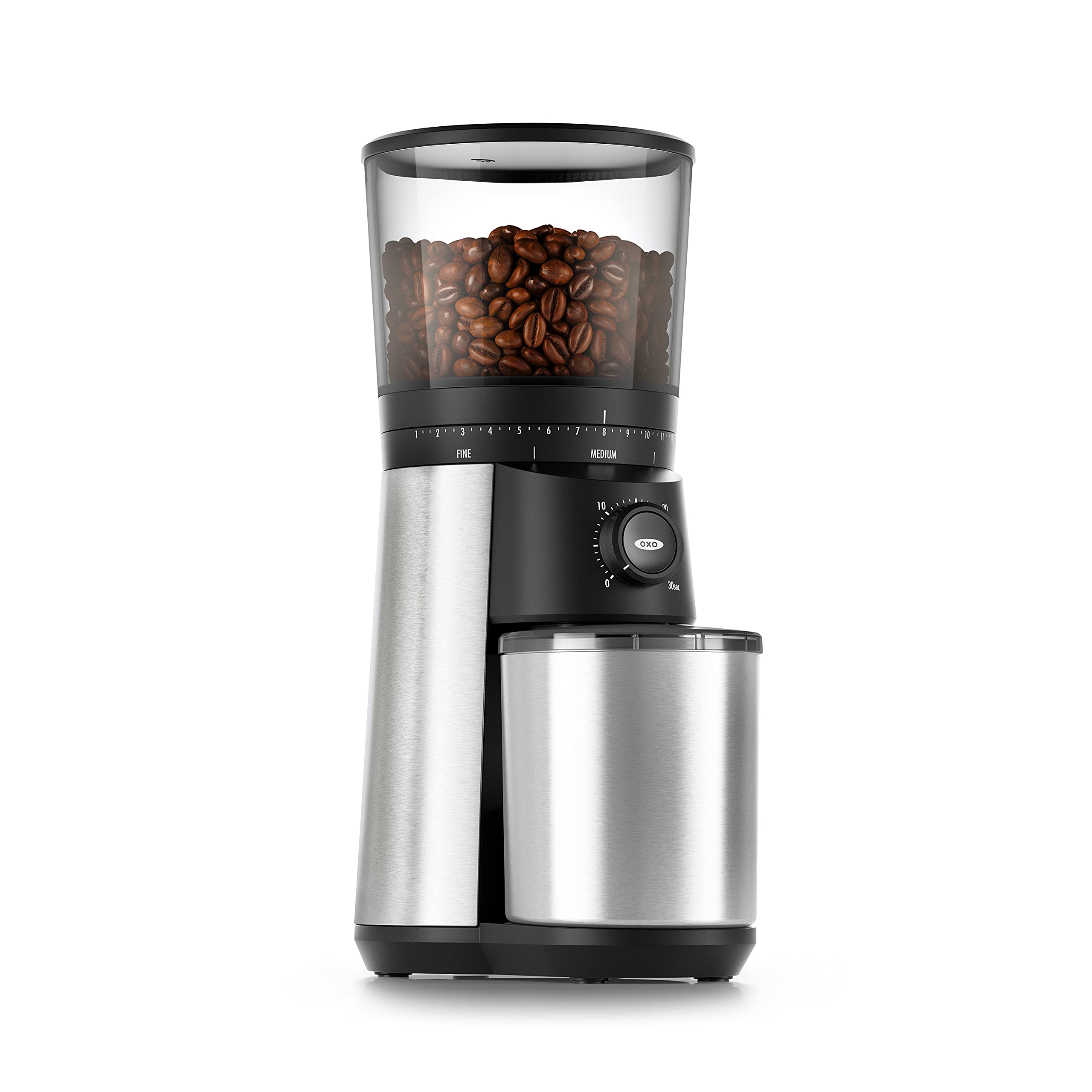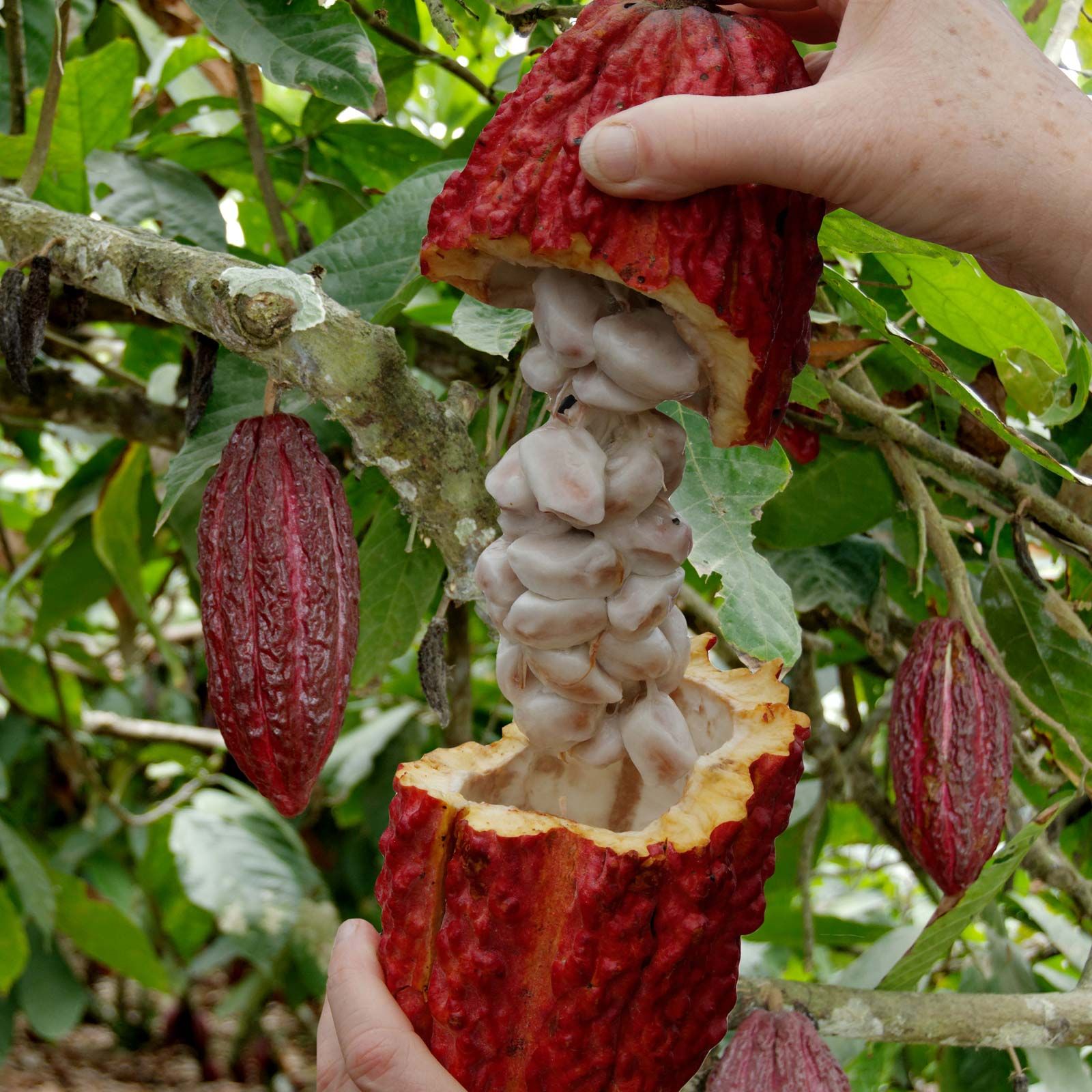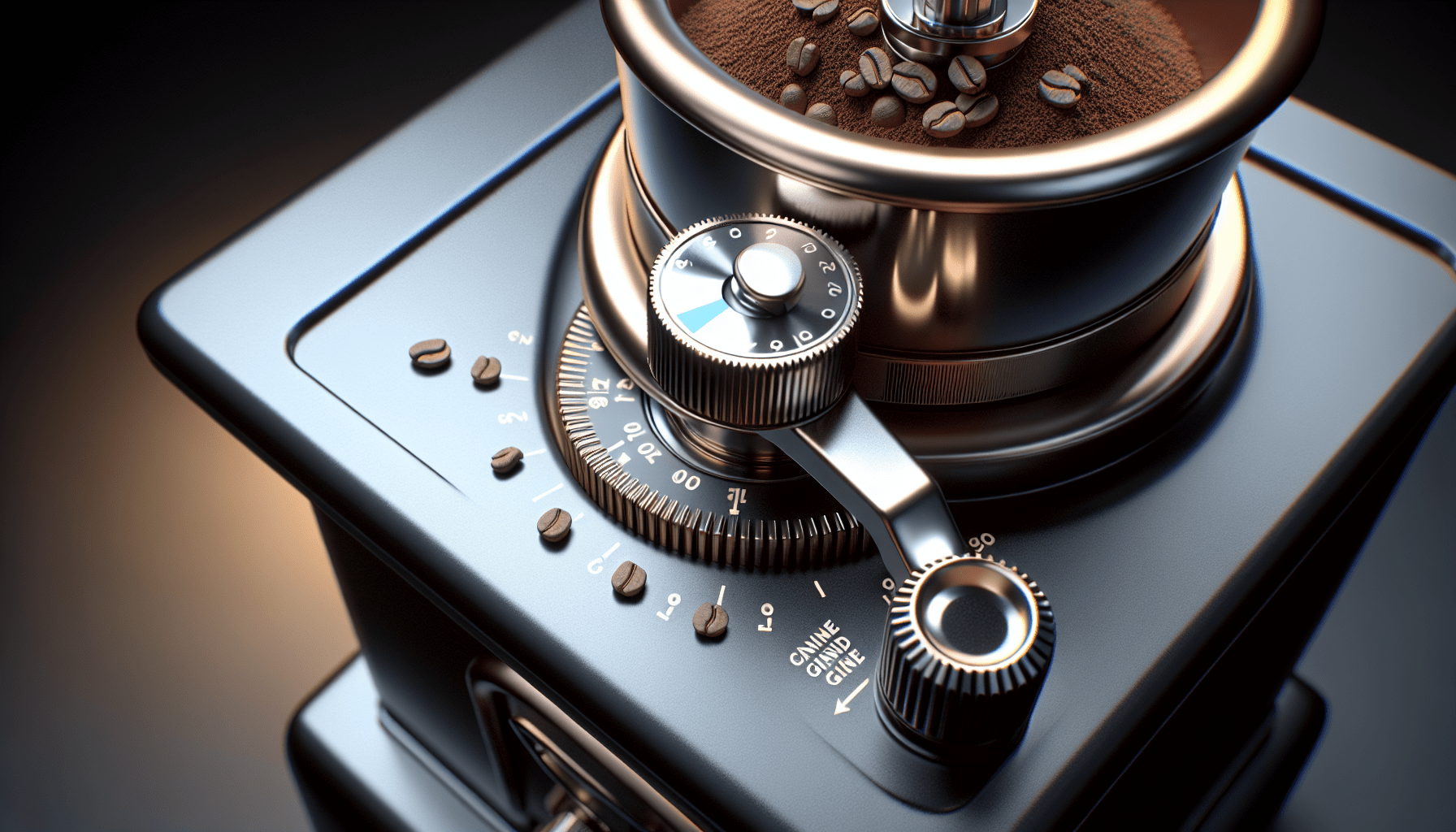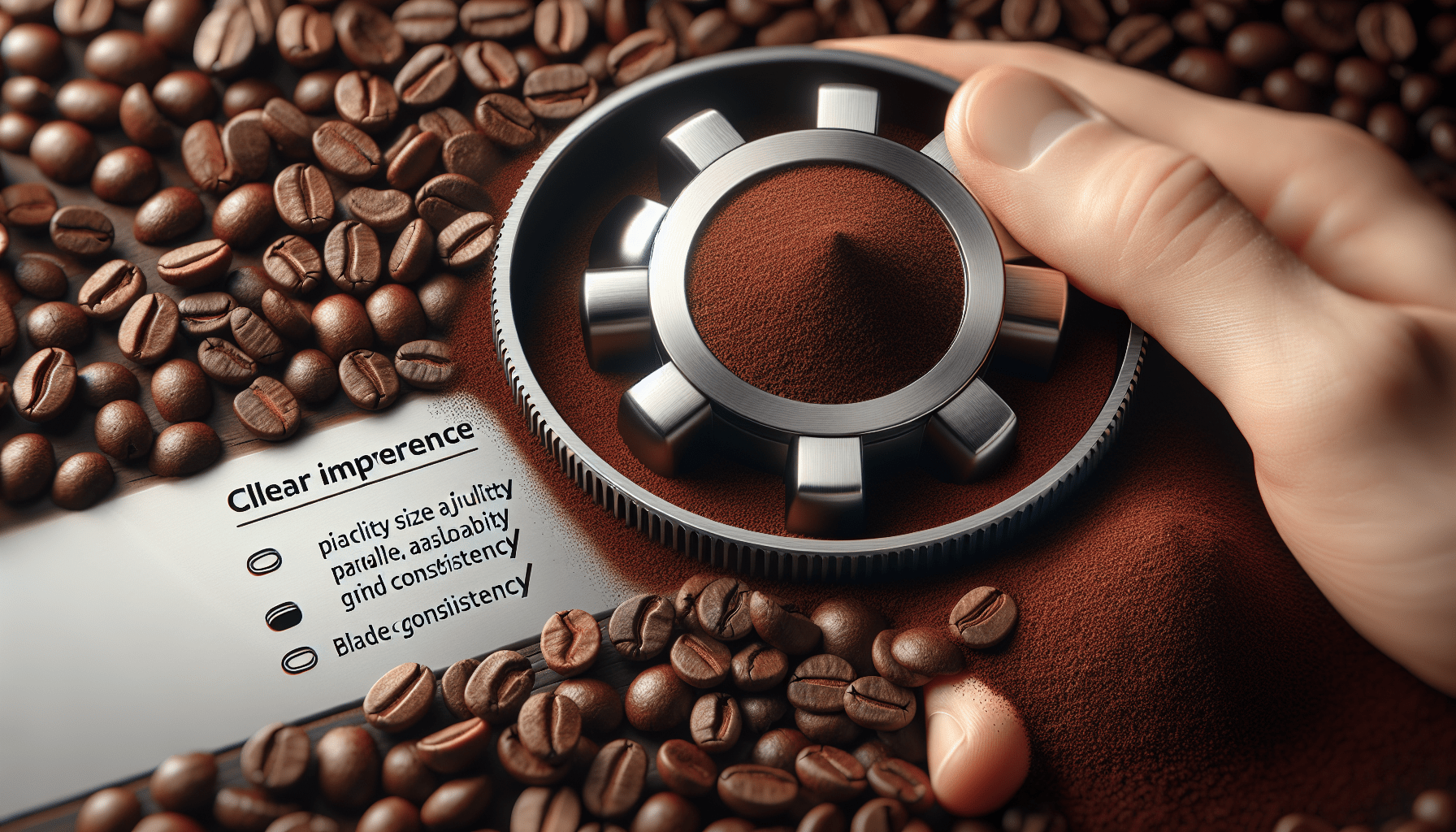If you’re a coffee lover, you know that nothing beats the aroma and taste of a freshly ground cup of joe. But with so many coffee grinder machines on the market, how do you know which one is best for your home? Whether you prefer a simple and compact blade grinder or a versatile and precise burr grinder, this article will guide you through the different types of coffee grinder machines available, helping you make an informed decision that will elevate your coffee brewing game to a whole new level of deliciousness.
Blade Grinder
Features
A blade grinder is a basic and affordable option for grinding coffee at home. It consists of a small electric motor that spins a blade to chop the coffee beans. Some common features of blade grinders include a transparent lid for easy monitoring of the grinding process, a pulse button for more control over the grind size, and a removable grinding bowl for easy cleaning.
Pros
One of the main advantages of a blade grinder is its affordability. They are generally the least expensive option on the market, making it a budget-friendly choice for coffee enthusiasts. Blade grinders are also compact and lightweight, making them easy to store and transport. Additionally, they are simple to use, even for beginners.
Cons
While blade grinders have their advantages, there are also some drawbacks to consider. One major drawback is the lack of grind consistency. The spinning blade chops the coffee beans randomly, resulting in an uneven grind size. This can lead to an inconsistent extraction process and negatively impact the taste of your coffee. Another disadvantage is the potential for overheating the beans during grinding, which can affect the flavor. Finally, blade grinders also tend to produce more heat and noise compared to other types of grinders.
Burr Grinder
Features
A burr grinder is a more advanced option that uses two abrasive surfaces, known as burrs, to crush the coffee beans. These burrs can be made of ceramic or stainless steel and are highly efficient in grinding coffee evenly. Some notable features of burr grinders include adjustable grind settings, a hopper for holding the beans, and a grind size selector.
Pros
One of the main advantages of using a burr grinder is the consistent grind size it produces. The burrs crush the beans in a uniform manner, resulting in an even extraction and a better-tasting cup of coffee. Burr grinders also offer a wide range of grind size options, allowing you to customize the grind to your preferred brewing method. Additionally, they produce less heat during grinding, which helps to preserve the flavor of the coffee beans.
Cons
While burr grinders are generally considered superior to blade grinders, they do have some downsides to consider. One potential drawback is the higher price point compared to blade grinders. Burr grinders tend to be more expensive, especially if you opt for a high-quality model. Additionally, burr grinders can be larger and heavier, requiring more counter or storage space. Some burr grinders also require more manual effort to operate, as they may need to be manually adjusted for different grind sizes.
Manual Grinder
Features
A manual grinder, also known as a hand grinder, is a non-electric option that requires human effort to operate. It typically consists of a handle, a grinding mechanism (such as burrs or blades), and a storage container for the ground coffee. Manual grinders are often compact and portable, making them ideal for travelers or those who prefer a more hands-on approach to coffee preparation.
Pros
One of the major advantages of a manual grinder is its portability. Since manual grinders don’t rely on electricity, they can be easily taken on camping trips or used in situations where power outlets are not available. They are also considerably quieter compared to electric grinders, making them a good choice for early morning coffee preparation. Manual grinders also offer more control over the grind size, as you can adjust the grinding mechanism to your desired setting.
Cons
Despite their advantages, manual grinders do have some limitations. One notable drawback is the amount of time and effort required to grind the coffee beans manually. It can be a labor-intensive process, especially if you need to grind a large quantity of beans. Manual grinders also tend to have a smaller capacity compared to electric grinders, which means you may need to refill them more frequently. Additionally, manual grinders may not be suitable for individuals with mobility issues or those who prefer a more automated coffee grinding experience.
Electric Grinder
Features
An electric grinder is a convenient and efficient option for grinding coffee at home. As the name suggests, it is powered by electricity and typically features a motorized grinding mechanism. Electric grinders come in various sizes, with different capacity and speed options. Many electric grinders also offer programmable settings, allowing you to customize the grind size and brewing time.
Pros
One of the main advantages of an electric grinder is its speed and convenience. Electric grinders are designed to grind coffee beans quickly and efficiently, saving you time and effort in the morning rush. They also offer more consistency in grind size compared to manual grinders, ensuring a better extraction and flavor profile. Electric grinders are also suitable for those with mobility issues, as they require minimal physical effort to operate.
Cons
While electric grinders offer convenience, there are a few potential drawbacks to consider. One consideration is the noise level, as electric grinders tend to be louder compared to manual grinders. This may be a concern for individuals living in close quarters or those who prefer a quieter coffee preparation process. Electric grinders also require a power source, so they may not be suitable for outdoor use or situations where electricity is not available. Additionally, some high-end electric grinders can be pricey, especially if you’re looking for advanced features and customization options.
Doser Grinder
Features
A doser grinder is a type of electric grinder that includes a dosing chamber for measuring and dispensing the ground coffee. It features a lever or a button that releases a predetermined amount of coffee grounds into a separate container or directly into a portafilter. Doser grinders are often used in commercial settings or by espresso enthusiasts who require precise dosing.
Pros
One of the main advantages of a doser grinder is its ability to dispense a consistent amount of coffee grounds. The dosing chamber allows for precise measurement, which is especially beneficial for those who want to achieve a specific coffee-to-water ratio. Doser grinders are also efficient for high-volume coffee preparation, as they can quickly dose the desired amount of ground coffee. Additionally, the separate container or portafilter holder makes it convenient to collect the coffee grounds without creating a mess.
Cons
Despite their advantages, doser grinders may not be suitable for everyone. One potential drawback is the extra steps involved in the dosing process. You need to actively engage the lever or button each time you want to dispense coffee grounds, which may be less convenient for those who prefer a more automated grinding experience. Doser grinders also tend to have a larger footprint and may require more counter space compared to other types of grinders. Additionally, doser grinders are more commonly used for espresso preparation, so they may not be ideal for those who prefer other brewing methods.
Doserless Grinder
Features
A doserless grinder, also known as a direct grind or grind-on-demand grinder, operates without a dosing chamber. Instead, the ground coffee is dispensed directly into a portafilter or a container. Doserless grinders are popular among home baristas who prioritize freshness and precision in their coffee preparation.
Pros
One of the main advantages of a doserless grinder is the freshness of the coffee grounds. Without a dosing chamber, the coffee is ground directly into the desired container or portafilter, minimizing the contact with air and preserving the flavor. Doserless grinders also offer more flexibility in adjusting the grind size, as you can make on-the-fly changes to suit different brewing methods. Additionally, doserless grinders tend to be more compact and require less counter space compared to doser grinders.
Cons
While doserless grinders have their merits, they may not be the ideal choice for everyone. One potential drawback is the potential for mess and wastage. Without a dosing chamber, the ground coffee may scatter or spill during the grinding process, requiring extra cleanup. Doserless grinders also require more manual effort during the coffee preparation process, as you need to hold the portafilter or container in place while grinding. Additionally, doserless grinders may not be as suitable for high-volume coffee preparation, as they may take longer to grind larger quantities of beans.
Grind Size Options
Fine Grind
A fine grind is commonly used for espresso or Turkish coffee. It has a powdery consistency and feels smooth to the touch. The fine grind allows for a higher extraction rate and a stronger coffee flavor. This grind size is achieved by grinding the coffee beans for a longer duration.
Medium Grind
A medium grind is versatile and suitable for a wide range of brewing methods. It has a texture similar to granulated sugar and is often used for drip coffee, pour-over, and AeroPress. The medium grind provides a balance between extraction and flavor, producing a satisfying cup of coffee.
Coarse Grind
A coarse grind is often used for French press or cold brew coffee. It has a rough and chunky texture, similar to sea salt. The coarse grind allows for slower extraction, resulting in a smoother and less bitter taste. This grind size is achieved by grinding the coffee beans for a shorter duration.
Grind Consistency
Uniformity
Uniformity in grind consistency refers to the evenness of the coffee particles after grinding. It is important to achieve a consistent grind size to ensure an even extraction and a balanced flavor profile. Blade grinders tend to produce less uniform grind sizes compared to burr grinders, which can negatively impact the coffee’s taste.
Adjustability
The adjustability of grind size refers to the ability to customize the grind size according to your preferred brewing method. It is important to have a grinder that offers a wide range of grind size options to accommodate different brewing techniques. Burr grinders are known for their adjustable grind settings, allowing you to fine-tune the grind size to match your brewing preferences.
Retention
Grind retention refers to the amount of coffee grounds that remain in the grinder after each use. Excessive retention can lead to stale and inconsistent coffee, as older grounds mix with freshly ground ones. It is important to choose a grinder with minimal retention to ensure optimal flavor in every brew. Burr grinders tend to have less retention compared to blade grinders.
Capacity and Speed
Capacity
Grinder capacity refers to the amount of coffee beans that can be ground at once. It is important to consider your brewing frequency and the number of people you typically serve when choosing a grinder with the appropriate capacity. Electric grinders often have larger capacities compared to manual grinders, allowing you to grind more beans in a single batch.
Speed
Grinder speed refers to the time it takes for the grinder to complete a grinding cycle. While speed can be a convenient factor, it is important to note that a faster grinder may generate more heat, which can affect the flavor of the coffee. Finding a balance between speed and heat generation is crucial for achieving optimal extraction. Electric grinders tend to be faster compared to manual grinders.
Budget Considerations
Affordable Options
If you’re on a tight budget, blade grinders are the most affordable options available. They provide a basic grinding function without breaking the bank. While they may lack grind consistency, they can still deliver a decent cup of coffee for casual coffee drinkers.
Mid-range Options
Burr grinders fall into the mid-range category and offer a good balance between price and performance. They provide more consistency and customization compared to blade grinders, making them a popular choice among home coffee enthusiasts. Depending on the brand and features, mid-range burr grinders offer a good value for money.
Premium Options
For those who are willing to invest in a high-quality grinder, premium options are available. These grinders often utilize advanced technologies to provide precise grind size adjustment, minimal retention, and exceptional performance. While they come with a higher price tag, premium grinders are built to last and offer unparalleled consistency and flavor in every cup.
In conclusion, when choosing a coffee grinder for home use, consider your budget, preferred brewing methods, and desired grind consistency. Blade grinders are affordable but may lack uniformity, while burr grinders provide more consistency and customization options. Manual grinders are portable and offer more control, while electric grinders are convenient and efficient. Doser and doserless grinders have their own benefits depending on your dosing preferences. Additionally, grind size options, grind consistency, capacity, speed, and budget considerations are all important factors to take into account when selecting the best coffee grinder for your home.




